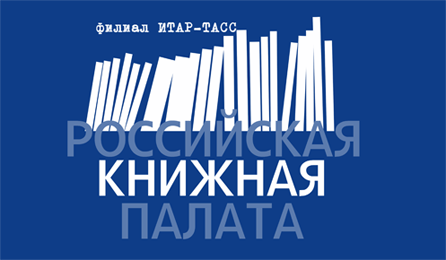Rural-urban migration in contemporary Russia through the prism of quantitative and qualitative analysis
Jul 20 2024Kartseva M. A., Mkrtchyan N. V., Florinskaya Yu. F. Rural-urban migration in contemporary Russia through the prism of quantitative and qualitative analysis // The Russian Peasant Studies. 2024. V.9. №2. P. 153-179.
DOI: 10.22394/2500-1809-2024-9-2-153-179
Annotation
The authors consider the Russian rural-urban migration, focusing on its current trends. The migration loss of rural population has decreased slightly; however, the outflow from rural areas depends on multidirectional processes in suburbs and peripheral villages. According to the Russian Federal State Statistics Service, rural periphery continues to experience a strong migration decline, while the suburban village rapidly grows due to migration. Based on the microdata of the sociological survey “People, family, society” conducted by the INSAP RANEPA in 2023 and econometric techniques, the authors examined rural-urban migration as related to the labor market and income. The article shows that individual decisions to move from rural to urban areas are rational and economically justified, since such a migration improves one’s position in the labor market, increases wage and per capita income. The identified motives for migration from rural to urban areas and its social-economic drivers were confirmed by a series of in-depth interviews conducted in the summer of 2023.
Keywords
Rural area, rural population, cities, rural-urban migration, employment, wage, income.
About the authors
Marina A. Kartseva, PhD (Economics), Deputy Head of the Institute for Science, Russian Presidential Academy of National Economy and Public Administration, Prosp. Vernadskogo, 82, Moscow, 119571, Russia.
E-mail: This email address is being protected from spambots. You need JavaScript enabled to view it.
Nikita V. Mkrtchyan, PhD (Geography), Senior Researcher, National Research University Higher School of Economics; Institute for Science, Russian Presidential Academy of National Economy and Public Administration, Prosp. Vernadskogo, 82, Moscow, 119571, Russia.
E-mail: This email address is being protected from spambots. You need JavaScript enabled to view it.
Yulia F. Florinskaya, PhD (Geography), Senior Researcher, Institute for Science, Russian Presidential Academy of National Economy and Public Administration; National Research University Higher School of Economics, Prosp. Vernadskogo, 82, Moscow, 119571, Russia.
E-mail: This email address is being protected from spambots. You need JavaScript enabled to view it.
The article was submitted on 16.02.2024.
Chuchkalov A. S., Mishchuk S. N., Grelya N. K. Factors of suburban rural areas turning into a depressed region (on the example of the Birobidzhan district in the Jewish Autonomous Region) // The Russian Peasant Studies. 2021. V.6. №4. P. 125-135.
DOI: 10.22394/2500-1809-2021-6-4-136-163
Annotation
Based on the results of field studies, the authors consider the post-Soviet transformations of the territorial organization of suburban rural areas in the depressed Far Eastern region (Birofeld and Valdheim rural administrations of the Birobidzhan district in the Jewish Autonomous Region). Transformations of rural areas are considered as determined by multidirectional factors divided into “external” (general) and “internal” (local). The article describes an impact on the countryside of such “external” factors as urbanization, changes in the specialization of agriculture and in the administrative-territorial and municipal structure, optimization of social services, changes in rural infrastructure and external institutional conditions for development. When considering the “internal” (local) factors of transformations, the authors identify differences in the social structure of migrants from Birobidzhan to the suburban countryside. The changes in the structure of the rural population by spheres of employment and prevailing sources of income are presented as a result of the combination of factors. Some changes in the lifestyle of the rural population are described. Based on the assessment of the impact of different factors on the depopulation, the authors suggest some management measures. The authors conclude that the Birobidzhan district is a rare Russian example of the agricultural suburban territory in relation to the regional center, of the countryside with a reducing number of functions.
Keywords
Rural areas, depopulation, suburban areas, transformation factors, ruralurban migration, rural employment, rural society, rural settlement, Jewish Autonomous Region, Birobidzhan, subsidiary plots, marginalization.
About the authors
Chuchkalov Alexander S., Master’s Student, Department of Economic and Social Geography of Russia, Lomonosov Moscow State University. 119991, Moscow, Leninskie Gory, 1.
E-mail: This email address is being protected from spambots. You need JavaScript enabled to view it.
Mishchuk Svetlana N., PhD (Economics), Senior Researcher, Institute for Demographic Research, Federal Centre for Theoretical and Applied Studies of the Russian Academy of Sciences, 119333, Moscow, Fotieva St., 6, bldg. 1; Senior Researcher, Institute for Complex Analysis of Regional Problems, Far Eastern Branch of the Russian Academy of Sciences, 679016, Birobidzhan, Sholem Aleichem St., 4.
E-mail: This email address is being protected from spambots. You need JavaScript enabled to view it.
Grelya Nataliya K., Master’s Student, Department of Economic and Social Geography of Russia, Lomonosov Moscow State University. 119991, Moscow, Leninskie Gory, 1.
E-mail: This email address is being protected from spambots. You need JavaScript enabled to view it.
The spatial structure of kinship (on the example of the Zharkovsky settlement of the Tver Region)
Aug 07 2019Alekseev A.I., Efimova O.Yu., Tkachenko A.A. The spatial structure of kinship (on the example of the Zharkovsky settlement of the Tver Region) // The Russian Peasant Studies. 2019. V.4. №2. P. 128-137.
DOI: 10.22394/2500-1809-2019-4-2-128-137
Annotation
The article considers the spatial structure of relationships of families in the peripheral settlement Zharkovsky (3 thousand inhabitants) with their children and relatives in other cities and villages. There are 180 members in 90 surveyed families of the village that has been losing population for the last 50 years, and its “diaspora” has spread from Dublin to Vladivostok and from Murmansk to Amman. The children of Zharkovsky’s residents are mostly students in two nearest regional centers—Tver and Smolensk, and also in Moscow and Saint Petersburg; educational institutions in medium-sized and small cities are less popular. Other relatives live in the same cities, but are much more dispersed in the cities of Siberia, the Kaliningrad Region, Belarus, etc. Most of the households under study consist of middle-aged parents or, more often, only of a mother, or elderly parents, whose children have already left the village. The spatial structure of kinship is usually “centrifugal”: the majority of relatives in other places are those who left the village. However, sometimes children live in the village while parents live in other places: these are children who left the villages of the Zharkovsky district, in which their elderly parents still live. Thus, there is also a “centripetal” structure of kinship ties: some residents of the village are recent immigrants from other places.
Keywords
kinship, spatial structure, Tver Region, households, rural-urban migration
About the authors
Alekseev Alexander I., DSc (Geography), Professor, Faculty of Geography, Lomonosov Moscow State University. 119991, Moscow, Lenin Hills, 1.
Email: This email address is being protected from spambots. You need JavaScript enabled to view it.
Efimova Olga Yu., Student, Faculty of Geography and Ecology, Tver State University. Tver, Proshina St., 3, bldg. 2.
E-mail: This email address is being protected from spambots. You need JavaScript enabled to view it.
Tkachenko Alexander A., DSc (Geography), Professor, Faculty of Geography and Geographical Ecology, Tver State University. Tver, Proshina St., 3, bldg. 2.
E-mail: This email address is being protected from spambots. You need JavaScript enabled to view it.





















